Tennis Elbow Stretch Exercises, Massage, Home Remedies
It is the same ailment that bothered Sachin Tendulkar in last half of his career. Tennis elbow – pain in elbow region due to excess stretching is more common in the age group of 30-50 years. The incidence is more in women when compared to male in India. One may not be a tennis player to suffer from this condition.
It may occur in any individual who overuses the muscles around the elbow joint in his profession or in routine practice. Here the outer part of the elbow becomes sore and tender.
Table of Contents
What is tennis elbow?
Simply put, tennis elbow is inflamed (swollen) tendon at the elbow region. Tendon is a hard structure that connects muscles to the bones. Inflamed tendon is called tendinitis (Itis = inflammation). In medical terms, tennis elbow is called Lateral epicondylitis.
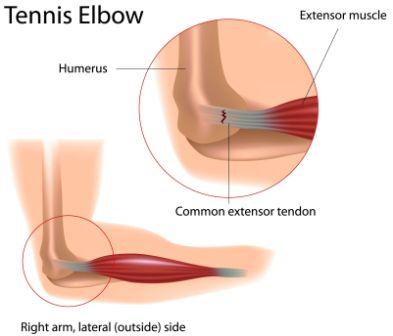
Even though exact replicative term is not found in Ayurveda it can be co-related to the Koorparasandhi shoola or Sandhivata of Koorpara sandhi. Koorpara sandhi refers to elbow joint.
Origin for tennis elbow
Repeated strenuous movements and pre existing injuries damage the forearm muscles and tendons and hence the pain and tenderness are caused.
Causes
Causes of Tennis elbow:
Lifting the heavy objects
Games such as tennis, squash, fencing, cricket (batting with a heavy bat)
Continuous work – gardening, plumbing, brick-laying, writing, typing, chopping, painting, knitting, driving screws, meat cutting (another reason to go vegetarian! 🙂 ) and so on.
Continuous stress and strain to elbow joints by swinging movements as in handling a tennis racket.
Constant pull of the muscle leads to minute damage and tearing of the tendon (that joins the muscles to elbow), leading to pain and swelling.
Symptoms, features
Features and Symptoms of Tennis elbow:
The symptoms of tennis elbow develop gradually. In most of the cases, the pain begins as mild and slowly worsens over the period of time.
Radiating (spreading) pain and burning sensation from the outside of the elbow to the forearm and wrist.
Pain starts during extension of wrist, while you try to grip a bat, while you try to open a door, start driving a car etc.
Mild pain while handling the simple utensils like fork, knife, toothbrush etc may initially indicate the chances of affliction.
Tests to confirm diagnosis
Tennis elbow tests to confirm diagnosis:
The doctor resists extension of the 3rd digit of the hand while stabilizing proximal part. This causes pain and discomfort in the lateral epicondyle. More here
X Ray and MRI tests confirm the diagnosis.
Ayurvedic treatment
Ayurvedic treatment of tennis elbow:
Rest to the arm.
Mild oleation(snehana)
Mild sweating treatment(swedana)
Oral medications to pacify vata dosha(pain relieving agents)
Rejuvinators (Rasayana drugs) – to heal the torn tendon, to rejuvenate the degenerated tissues.
Accessory Ayurvedic therapies:
Patrapinda Sweda – Ela Kizhi – certain leaves and salt is tied into a pack, dipped in oil and applied over the elbow. Relieves pain.
Shastika Shali Pinda Swedam/ Navarakizhi – with rice and milk – to heal the torn tendon, to rejuvenate and strengthen elbow
Pizhichil (medicated oil bath) etc are administered to relieve pain, inflammation of muscles and tendons.
Ayurvedic medicines
External medicaments useful in Tennis elbow-
Ksheerabala taila 101 – is used for oral administration – this rejuvenates the tendon.
Bala taila – Massage improves strength of muscles and tendons
Sahacharadi taila – Massage is especially useful when there is elbow joint stiffness
Prasarini taila – reduces pain, relieves nerve irritation
Dhanvantara taila – externally applied to relieve swelling and inflammation. Oral administration is done for rejuvenation.
Avartita maharaja prasarini taila – Used to soothe nerve irritation and to heal torn tendons.
Internal medicaments useful in Tennis elbow-
Dashamoolarishta – Relieves inflammation
Balarishtha – soothes nerves, strengthens tendons
Asthavarga kashaya – Balances Vata, reduces pain
Maharasnadi Kashayam– Useful when the pain is more
Yogaraja guggulu – Used commonly in cases of joint pains
Physiotherapy, exercises
Tennis elbow strap:
Also called tennis elbow brace, keeps the muscles and tendons in stiff position. It reduces the excessive movement and gives them the needed rest and time to heal. It can be used for at least 4 – 8 hours per day.
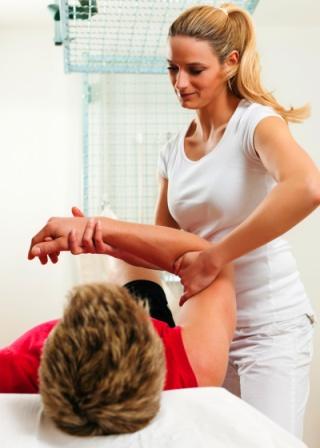
Physiotherapy for tennis elbow relieves pain and strengthens the joints. Treatment may be required for 1 – 4 weeks of time, half an hour on average.
Exercises and stretches for tennis elbow:
The below stretch exercises
1. Should only be done once the pain is under control.
2. Should only be done if your doctor / physiotherapist advises you.
3. Stop them if it starts paining again.
4. Do it slowly. Repeat only for 5 – 10 times.
5. In the morning, you can apply any of the massage oil and do the exercise for enhanced benefits. Stretching after oil application leads to better absorption and utility of the oil.
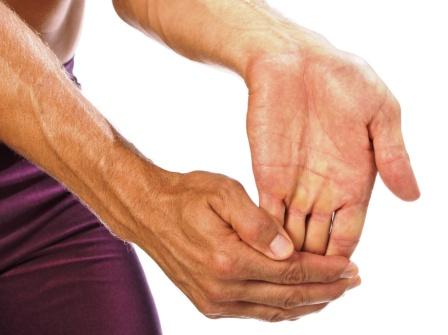
1.Backward Wrist stretch:
Keep the forearm rested, as you keep them in Sukhasana
Flex the wrist backwards with the help of the other hand till you feel comfortable.
With this, your front part of the palm looks stretched (as in the picture below).
Hold it stretched for 15 seconds.
Relax.
Repeat it for 5 – 10 times as per your convenience.
2. Front wrist stretch:
Flex the wrist in the opposite direction as shown in picture below – 15 seconds X 5 – 10 times
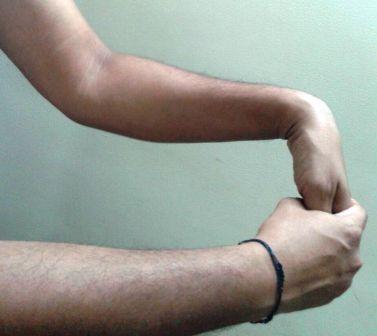
Back and front wrist clasp:
Clasp your hands in the back and front, as shown in the two pictures, and straighten your arms as far as you feel comfortable.
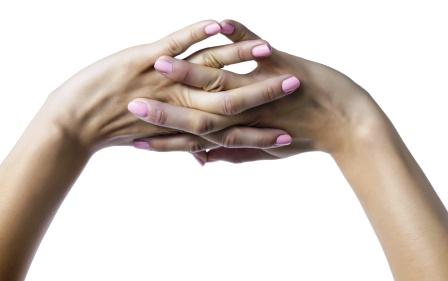
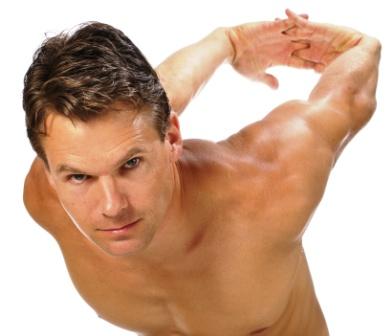
Ayurvedic home remedies
Home remedies for tennis elbow:
Caution: Do not do this when the affected part is hot and swollen. Do this only when there is pain without swelling.
Take fresh castor leaves. Apply any of the above herbal oils or sesame oils to it. Put it on a pan, heat it. Apply this over the affected region for 2 – 10 minutes. Make sure that the leaves are not too hot to cause damage to the skin and underlying tissue. Ideally, they should just be lukewarm.
If you can get Vitex negundo leaves (Nirgundi), the same procedure can be repeated with these leaves.
Surgery
In extreme cases of severe pain for more than 12 months, surgery is indicated but with Ayurvedic massage, rest and Ayurvedic medicines and therapies, much of the pain and swelling can be reduced.
Ayurvedic treatment may take 2 – 10 weeks to show results based on the extent of injury.
Last drop
If the patient has diabetes, stroke, circulatory disorders etc, then the chances of relief is reduced. Constant rest, daily self massage, avoiding heavy stretching, using straps, bands are useful tools for successful pain and swelling reduction.
Article by Dr MS Krishnamurthy and Dr Hebbar.







